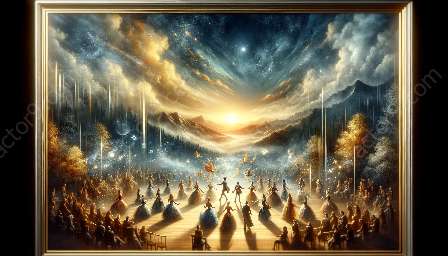Have you ever been captivated by an optical illusion, only to question how your brain could be so easily tricked? The neuroscience of optical illusions delves into the intricate ways in which our brains process visual information, often leading to misperceptions and intriguing phenomena. This topic cluster will explore the relationship between neuroscience, optical illusions, the psychology of magic and illusion, and the art of magic itself.
Understanding Optical Illusions
Optical illusions are visual stimuli that deceive the brain into perceiving something that is not actually present or perceiving it inaccurately. These illusions exploit the brain's tendency to make assumptions and interpret visual cues based on past experiences and expectations, often leading to surprising and paradoxical outcomes.
Neuroscience and Perception
The brain's involvement in processing visual illusions is a fascinating area of neuroscience. Scientists have discovered that various parts of the brain, including the visual cortex and higher-level processing regions, play critical roles in interpreting and sometimes misinterpreting visual information. Studying these mechanisms provides valuable insights into how the brain constructs our visual reality and how it can be manipulated through illusions.
Neural Mechanisms of Illusions
Researchers have identified specific neural mechanisms involved in generating and perceiving optical illusions. These mechanisms may include neural adaptation, where prolonged exposure to a stimulus can alter our perception, and the role of feedback loops within the visual system that influence our interpretation of ambiguous stimuli. Understanding these neural processes sheds light on how illusions can override our conscious perception.
The Psychology of Magic and Illusion
Optical illusions share a connection with the psychology of magic and illusion. Magicians and illusionists often exploit the brain's susceptibility to visual manipulation to create stunning and seemingly impossible feats. The psychology of magic explores the cognitive and perceptual mechanisms that underpin the effectiveness of magic tricks and illusions, offering a unique perspective on the intersection of science and entertainment.
Implications for Perception and Cognition
Studying the neuroscience of optical illusions has broad implications for our understanding of perception and cognition. By investigating how the brain processes visual information and how illusions can disrupt this process, researchers gain valuable insights into the mechanisms that shape our subjective reality. Additionally, understanding the vulnerabilities of perception can inform fields such as design, education, and visual communication.
The Art of Magic and Illusion
Beyond the scientific and psychological aspects, exploring the neuroscience of optical illusions connects to the art of magic and illusion itself. Magicians employ a deep understanding of human perception and cognitive biases to create mesmerizing experiences that challenge our sense of reality. By appreciating the cognitive principles behind these feats, we can gain a newfound appreciation for the craftsmanship and ingenuity that underpin the world of magic.
Conclusion
The neuroscience of optical illusions offers a multifaceted exploration of the intersection between perception, neuroscience, psychology, and entertainment. By unraveling the complexities of visual perception and the brain's susceptibility to manipulation, we gain a deeper understanding of how illusions captivate our minds and challenge our understanding of reality.


















